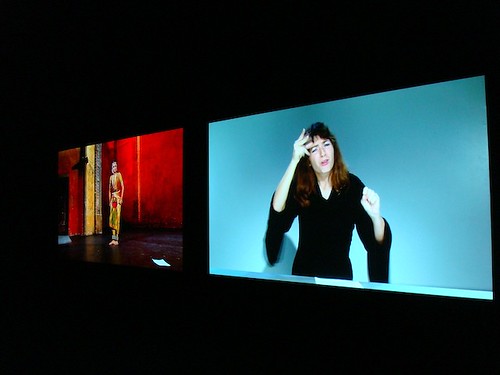Thursday 16 October 2008
The Context of the work.
Wednesday 15 October 2008
Contextual Frame Work #003
http://query.nytimes.com/gst/fullpage.html?res=9E0DE1D61338F931A25757C0A963948260
http://artipedia.org/artsnews/exhibitions/2007/02/28/horn-please-the-narrative-in-contemporary-indian-art/
Kevin Reynolds, the Director of Water world 1995, Created what I still class today as my favourite movie of all time.
I'd like to add this film itself, to my list, because even if it’s not seen in galleries as such, cinema's attract a different but yet still viable audience.
A film itself unless a documentary, will be posing a fake fiction, but the peice will be placed in a formal, begining middle and end sequence.
This generic system is what makes me feel that moveis are disregarded by upper socitiy in the feild of art and then people slip it into the catogory of entertainment.
This is of course how I feel towards the subject, I can't say anything is fact or fiction as my opinion might be missing vital intel towards the standing on movies as art, but not art movies.
Water world features a fake fiction that could actually be a reality, the ice caps have melted causing most of the world to be underwater.
Plants are priceless and dirt is gold.
Films like the day after tomorrow also focus on the possibilitys of disaster through global warming.
In essence this kind of narritive thats not far fetched can also be related to my peice.
Contextual Framework #002

"Sophie Calle is a French artist who works with photographs and performances, placing herself in situations almost as if she and the people she encounters were fictional. She also imposes elements of her own life onto public places creating a personal narrative where she is both author and character. She has been called a detective and a voyeur and her pieces involve serious investigations as well as natural curiousity."

http://video.google.co.uk/videosearch?um=1&hl=en&q=Sophie%20Calle&ndsp=20&ie=UTF-8&sa=N&tab=wv
Constructing Contextual Framework #001
 Joan Fontcuberta
Joan Fontcuberta His name, Joan Fontcuberta, born in 1955, this Spanish artist is considered one of Spain's top artist's as well as being a very shrewd editor and writer.Galleries such as the Museum of Modern Art, New York; the Art Institute of Chicago; Musee National d'Art Moderne, Centre George Pompidou, Paris; and Museum Folkwang, Essen, Germany to name a few, most of his works are show in Europe and America.
It would appear that he prefers group shows as the list I dug up shows a great number of these types of show, maybe because its more planning to create a space dedicated to your work alone, and maybe there is a time and cost issue.
Last exibition he attended, opened 8th of October this year (2008)http://www.artfacts.net/index.php/pageType/instInfo/inst/10124/lang/1

Costa Llobero Garden, Barcelona, de Joan Fontcuberta
This is an example of some fake flowers he created, I guess this piece is clever on quite a few levels. He is telling a story, trying to persuade your mind to believing this is real, while being a photographer, and sculptor.
http://www.amillionyearsoflight.com/site2/fotografia.html
This is his homepage, It has snakes with legs, super giant snails and appears very clever in the works execution.
My work is in essence the same, I am creating a fake fiction and trying to sell it to the audience. In my piece, I have machinery over organic substances, that’s about the only difference. But like him I too feel the best way to show this is in photographic form, because the video I created was to explicit in the uncovering of the objects, ill go into that in more detail later.